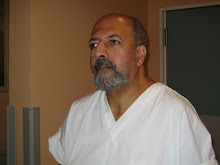Manhattan's Hit Factory ends production after three decades of legendary music making
By Terry Kirby, Chief Reporter
Published : 07 February 2005
John Lennon spent the final evening of his life there and 50 Cent, the rapper, was stabbed on the pavement outside. It is also where Stevie Wonder, Paul Simon and Bruce Springsteen created iconic albums that became part of the history of music.
Now New York's opulent Hit Factory, one of the world's best-known recording studios, is to close, a victim of the new digital age.
The writing has been on the wall for the studio since its creator, Edward Germano, died in 2003. His widow, Janice Germano, has announced that all the Hit Factory's activities will be transferred to Miami, where Germano bought the former Criteria Recording in 1999.
Music industry insiders said that the studio had become a victim to falling production costs elsewhere. The rise of inexpensive digital equipment has allowed high-quality recordings to be achieved almost anywhere by amateurs. Companies are now questioning the costs of recording at places like the Hit Factory.
"The Hit Factory paved the way for how recording studios approached the artistic process of making music," Mrs Germano said in a statement. "In doing so, it forever changed the way artists thought about creating records and raised the artform to a new level of innovation. That approach will continue in its Miami facility."
Germano, himself once a singer, became a producer and A&R man for RCA. He bought the studios, already a favourite for many artists, from Jerry Ragavoy, a producer-composer, in 1975, but moved them into new premises in West 54th Street in the centre of Manhattan.
As rock music expanded into a global, multi-million pound industry during the late Seventies, Germano created an environment where every whim of the pampered star was catered to. The six-storey, 100,000sq ft complex eventually boasted seven state-of-the-art recording studios and five mastering suites, a gym, a steam room and two-bedroom apartments for visiting artists. Germano is said to have ripped up carpets if they bothered the eye of a star and once filled a studio with 40 bales of hay to make a country musician feel more at home.
Germano's first important client was Stevie Wonder, who booked a three-day session and ended up working there for nine months, recording the material that would eventually comprise the Songs in the Key of Life triple album.
In 1979, John Lennon and Yoko One recorded the Double Fantasy album there, which became Lennon's last. Not long after it was released, Lennon and Ono spent the evening in the studio, mixing Ono's single "Walking on Thin Ice". Later that evening, Lennon was shot outside his apartment, just a little further north in Manhattan.
Other well-known albums recorded or part-recorded at The Hit Factory include the Rolling Stones' Emotional Rescue, Bruce Springsteen's Born in the USA and Paul Simon's Graceland. Artists who have recorded there include Michael Jackson, Tony Bennett, Madonna, U2, Barbra Streisand, Whitney Houston, Toni Braxton, Billy Joel, Jay-Z and Beyoncé.
In 1994, due partially to the success of Houston's recordings for the film The Bodyguard, music recorded, mastered or mixed at the Factory captured a record 41 Grammy nominations. It remained one of the landmark studios of the hip-hop era; in March 2000, 50 Cent suffered one of several attempts on his life when a gang stabbed him as he left the studio.
THE STUDIO'S HITS...
Paul Simon - Graceland (1986) The successful fusion of African and Latin rhythms was recorded partially at the Hit Factory. It reinvigorated Simon's career.
Stevie Wonder - Songs in the Key of Life (1976) At first seen as self-indulgent compared to the masterpieces of Talking Book and Innervisions that preceded it, 'Songs...' has been re-evaluated more favourably.
Bruce Springsteen - Born in the USA (1984) Probably The Boss's best selling album. It spawned seven hit singles and cemented his position as a major star.
...AND ONE MISS
The Rolling Stones - Emotional Rescue (1980) Viewed as one of the Stones' low points in the studio and recorded during the height of the Jagger/Richards rift, it fared badly compared to the well-received Some Girls two years earlier.
lundi, février 07, 2005
Inscription à :
Publier les commentaires (Atom)



0 comments:
Enregistrer un commentaire